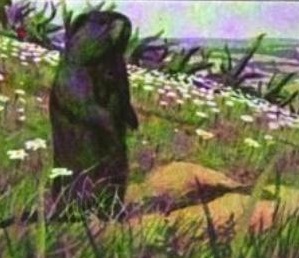 We always take a break from our scheduled programming for the major holidays, and Groundhog Day is certainly one of the major holidays.
We always take a break from our scheduled programming for the major holidays, and Groundhog Day is certainly one of the major holidays.
The groundhog shown here appeared a hundred years ago in the May 1918 issue of National Geographic magazine. As you can see, the groundhog’s shadow is visible, meaning that winter 1918 lasted another six weeks (despite the visible flowers).
The article explains the phenomenon:
The prominence of the groundhog as a popular figure in the country lore of the Eastern States is shown by his having been given a place with the Saints on the calendar, February 2 being widely known as “Groundhog Day.” It is claimed that on this date the groundhog wakes from his long winter sleep and appears at the mouth of his burrow to look about and survey the weather. If the sun shines so that he can see his shadow, bad weather is indicated and he retires to resume his sleep for another six weeks. Otherwise, the winter is broken and mild weather is predicted. Even on the outskirts of Washington some of the countrymen still appraise the character of the coming spring by the weather on “Groundhog Day.”
To help you celebrate with an appropriate holiday dinner, here’s a link to some ground hog recipes.
